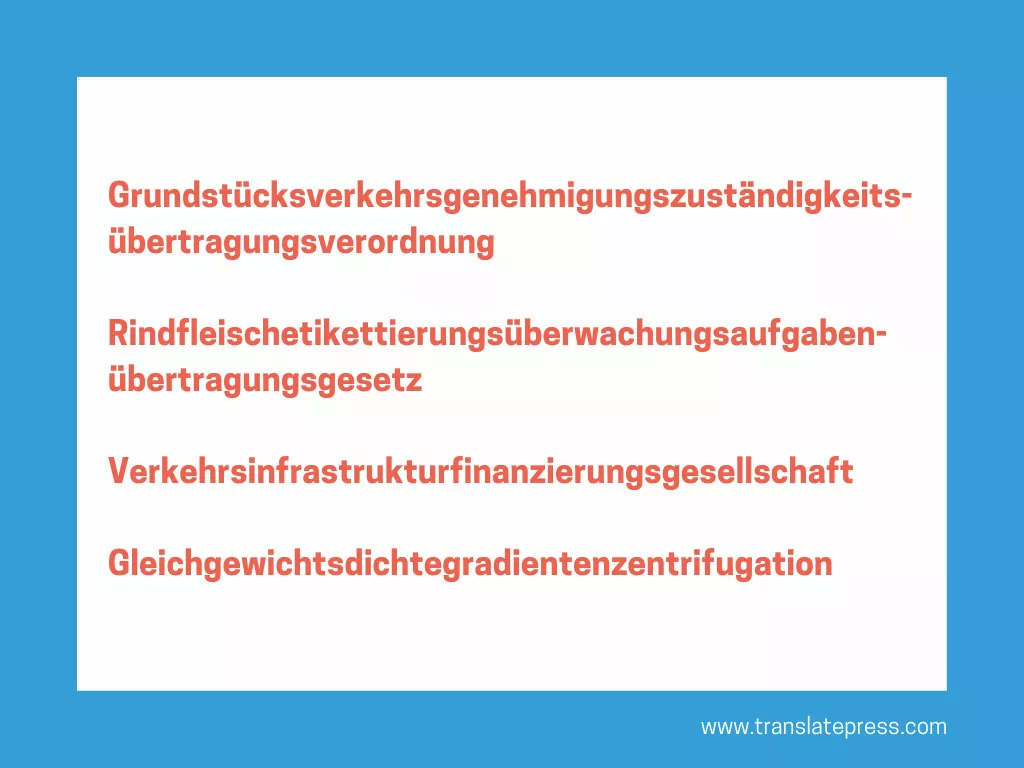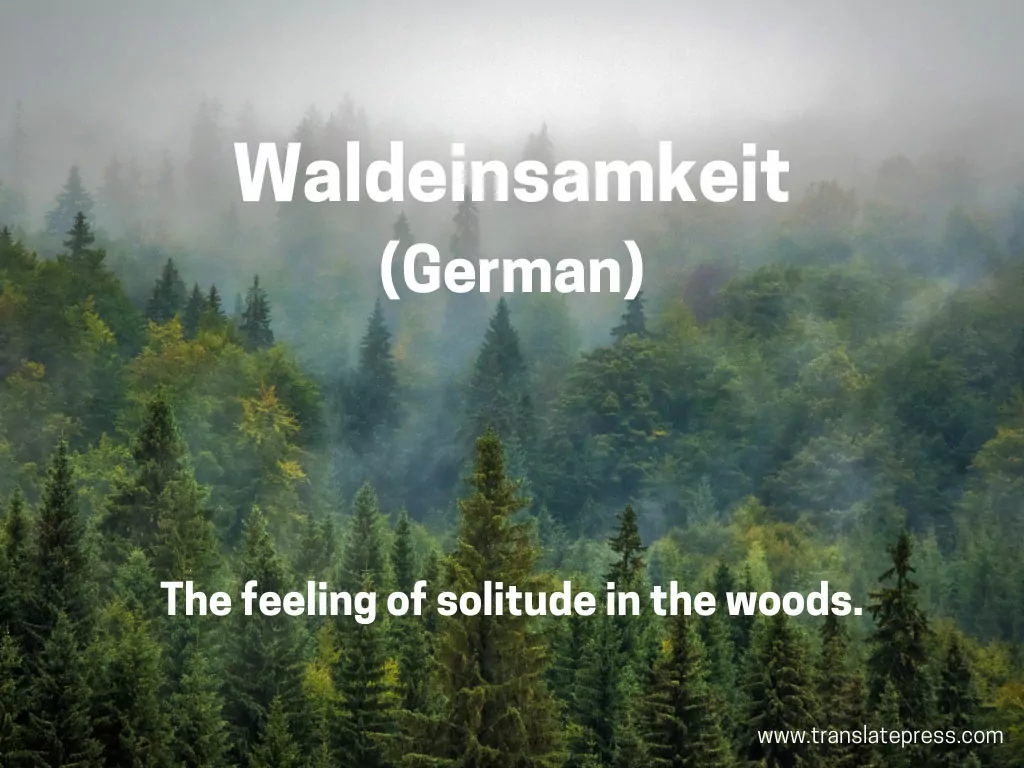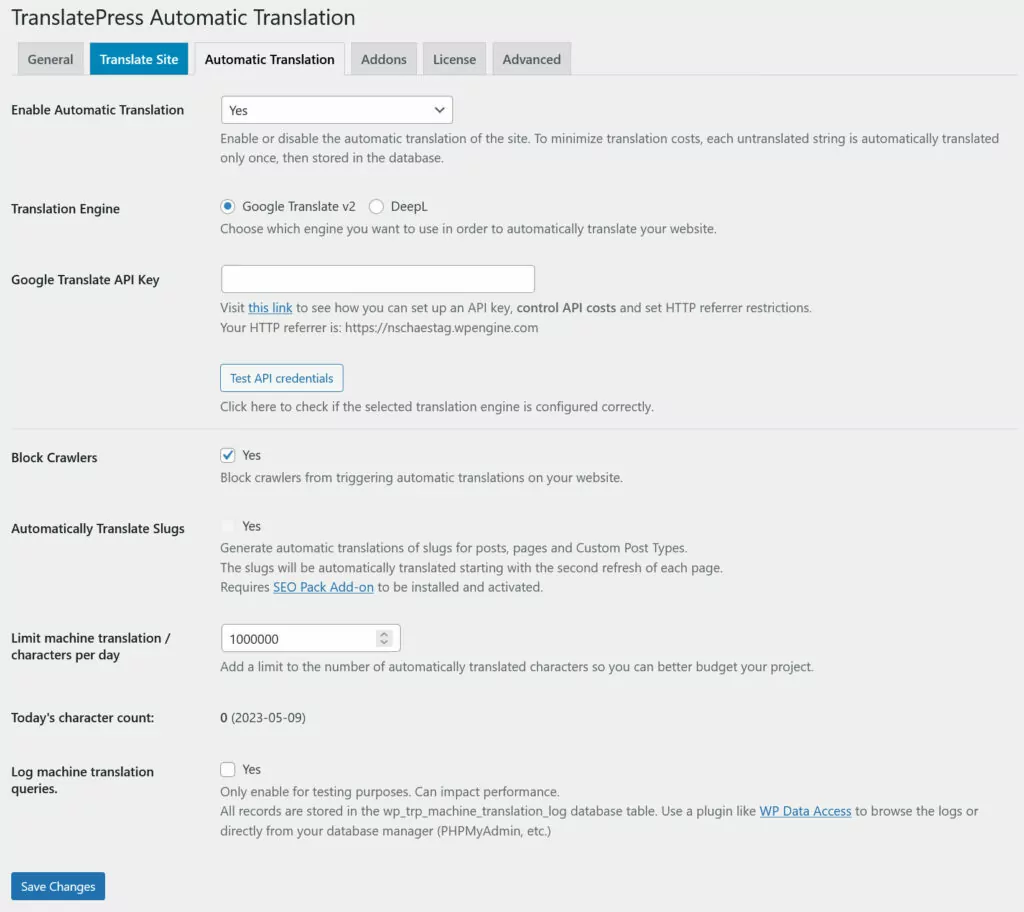Translating, whether it’s your website or something else, is rarely simply about converting text word for word into another language. There are a number of problems you can run into with the translation process.
Being prepared for this can make it easier to avoid certain pitfalls. For that reason, in this article, we will take a look at the most common translation issues, from general difficulties over cultural considerations to problems with machine and literary translation.
General Translation Issues to Be Aware Of
First, let’s cover some of the things that often come up as difficulties when translating text.
Dissimilar Language Structures
First up are simple language differences. Languages can be very unlike each other on the most basic level, such as word order. For example, in English, you have subject-verb-object, such as “I love you”. In Turkish, you use subject-object-verb. Here, the sentence is “I you love” or “Ben seni seviorum”.

You can also put an entire sentence into just one word in Turkish. “Apartmandayim” means “I am in the apartment”, a very different structure than English.
As a consequence, translating can come with quite a bit of rearranging, depending on the languages involved. The higher the complexity of their differences, the higher the difficulty of translating them.
Preserving Tone
The tone is a central part of a text. For example, in branding, it’s how you communicate, the voice you give your business. It sets you apart from the competition, helps you connect with customers, and is recognizable in slogans, taglines, ads, and more.
To make sure it translates well in other languages, you have to pay attention to what constitutes tone:
- Diction — Your use of words, whether they are simple or complex.
- Formality — You can use informal or formal tone.
- Rhythm — The flow of words.
Humor, slang, and cultural references can also be part of the tone. All of this is hard to replicate one-to-one in another language and you need a skilled translator to do so. Another option is to opt for a slightly different tone in your target language but then you also need to make sure it is consistent.
Dealing With Compound Words
Compound words are combinations of two or more different words forming a new one. Some of them have a clear meaning directly related to their parts like “toothbrush”. However, their meaning can also be less direct such as in “bookworm”. While it’s not really a worm, it still paints an understandable picture of the person it describes. There are also examples of compound words that have no relation to the object they describe, e.g. in “butterfly”.
Of course, translating compound words like this needs a lot of skill, especially if they don’t exist in the same way in the target language. You also need to know when not to take them literally. By the way, a language well known for its use of long compound words is German.

Translating Two-word Verbs
Two-word verbs are the bane of language learners around the world. Having to memorize the difference between “to break up”, “to break in”, and “to break down” — who doesn’t remember?
On the surface, they are simply a combination of a verb and a preposition. However, together they take on specific meanings that are very different from each other and you have to translate them together, not separately.
Of course, this can also pose a problem with converting them from one language to another. You need to be skilled in both the source and target language to transfer the meaning of two-word verbs correctly.
Words With Multiple Meanings
Another common issue in translation is that words can have more than one meaning, especially depending on where they appear in a sentence. You mainly run into two different cases here:
- Homonyms — These are spelled and pronounced in the same way but can have different meanings. For example, “Scale the fish and put it on the scale”.
- Heteronyms — They look the same but have different meanings and pronunciations. “Tear off a piece of paper and wipe your tear with it” is an example here.
These, too, require knowing both languages involved in the translation very well. Otherwise, you risk making serious mistakes.
Humor and Sarcasm
Humor in general can be a problem in translations because it doesn’t always convert well into another language. That, of course, is especially true for humor that relies on word plays to be funny.
A special case here is sarcasm. It often expresses something that is quite the opposite of the words used. If you were to take or translate it literally, you wouldn’t end up with the intended meaning.
In humor, you also have to take cultural concerns into consideration. Something that might be a joke in one language can be a harsh insult in another. Therefore, you have to work with nuance so that the intent works in both languages. More on that soon.
Name Translations
Translating names can be a challenge. This is especially for names that are originally in non-Latin script. For example, the former leader of China can either be written a “Mao Zedong” or “Mao Tse-Tung” depending on which transliteration you use. In a translation, you have to make a choice and stick with it.

Lack of Knowledge on the Subject Matter
Translation is first and foremost a linguistic endeavor. You have to possess the general knowledge of how to transfer text from one language to another.
However, another consideration is the subject of what you are translating. You need to have sufficient knowledge of what a text is talking about as well to make sure it ends up correct.
Imagine translating a medical or legal text or instructions for how to use dangerous chemicals without having a clue on that topic. The outcome could be disastrous.
That’s why translators often specialize in one or two subject matters. So they have enough knowledge to keep that from happening.
Design and Layout Issues
Especially in website translation, you can often run into problems with layout and design because of translation. Especially Asian, character-based languages are often much shorter than equivalent texts in Western alphabets since each character is an entire word or syllable.

Plus, you have some languages that run from right to left instead of the other way around. Finally, website text is most often accompanied by images, which can also contain text or target specific locales.

All of that has a bearing on the website design and can mess up the original layout. Something to keep in mind when converting your website into other languages.
Expensive and Time-consuming
A more practical problem with translation is that hiring a translator is not always cheap, especially for rarer language pairs. That’s money you could use for other things, like growing your website or business. Or, if you go the cheap way, the quality might not be good enough.
Plus, translation can be time-intensive. After receiving to translation, you have to review it to make sure it’s accurate for your line of work. Machine translation can help but it has its problems in comparison to manual translation.
However, you should also view these as an investment. A properly translated website can bring in new business and expand your market, so it often ends up having a positive ROI.
Cultural Issues in Translation
In addition to general problems, you can also run into translation issues rooted in culture. Here are a few examples.
Culture and Language Are Tightly Connected
First of all, it’s important to keep in mind that language reflects the values, beliefs, customs, and traditions of the people who speak it. That’s why different words can carry different meaning in separate languages. In China, it used to be common to greet each other with “Have you eaten?”, as food wasn’t always available in the past.
As a business, the words you use determine how different cultures perceive your brand, which is why transcreation and localization are so important. There are sometimes taboos and topics that can not be discussed or mentioned. Plus, it can go into other things like colors, images, layout, currency, time and date formats, units of measurement, etc.
Idioms, Expressions, and Slang
Everyday expressions can be very language-specific and pose issues for translation. You often can’t take them literally and many derive from the language’s culture.
You can even have expressions with divergent meanings in dialects of the same language. For example, Australian English is full of words that basically aren’t used in any other country even if they also speak English. Examples are “barbie” (barbecue), “thongs” (for flip-flops), or “Maccas” (for McDonald’s).

It takes a lot of cultural knowledge to be able to understand and translate such expressions. They are one of the most common problems with translation, particular machine translation.
Metaphors and Similes
Metaphors and similes go in the same direction as idioms and expressions, meaning they say something in more visual language. An example of a metaphor is to say that someone “has a heart of gold”, while a simile is to call them “stubborn as a mule”.
These, too, are often language and culture-specific and, therefore, possibly hard to translate. Sometimes equivalents exist. For example, in German, you call someone “as stubborn as a donkey”. However, sometimes you have to come up with something yourself.
Missing Words or Concepts
Another problem you might run into are words to translate that simply don’t exist in another language.

There are many reasons this can happen. It can be a culture-specific problem, such as when the associated thing or action is not permitted or performed in a country. In that case, you often have to find a description for the missing word or another roundabout way of translating it.
Literary Translation Problems
A special area for problems with translations is literary translation. That means, translating literary works like books or poetry. It poses specific challenges because this content is very different from, say, website translation or the translation of business documents.
Preserving the Style of the Source
First of all, literature is creative. A translation not only has to bring across the information it contains but also preserve the art in it, the original tone and intent, atmosphere, and style. It should evoke the same understanding and feeling in the target language as in the original.
That’s why literary translation is often harder to do because it is more artistic. You are basically rewriting a book or other creative work in another language. This is especially true for older works that use the style of a certain epoch. Translators need to be able to emulate that, which can take a lot of research.
So, if you really like a book that was originally written in another language, you actually also admire the translator’s work.
Translating Literary Devices
Besides staying true to the original book, there are also certain parts in literature that make up its “literariness” that you might run into while translating them. A good example here are the poems and songs in Lord of the Rings (and there are many of them). Here’s just one of them:
Cold be hand and heart and bone, and cold be sleep under stone: never more to wake on stony bed, never, till the Sun fails and the Moon is dead. In the black wind the stars shall die, and still on gold here let them lie, till the dark lord lifts up his hand over dead sea and withered land.
As a translator of these books, you would have to rewrite them not only in a new language but also preserve their rhyme scheme, length, and rhythm, all the while transporting the same subject matter. Sounds like a tall order? That’s because it is.
There are even more considerations like this, like alliterations, tongue twisters, or when characters talk in different dialects and you need to express that it in another language as well.
Problems With Machine Translation
Machine translation is very common these days as systems have become a lot more sophisticated. However, there are still issues to consider.
Not 100% Reliable
Of course, the first problem is that machine translations is often quite literal. Machines don’t have the same awareness of context and culture as a human translator has. They are also not a subject matter expert in a particular area but more of a general service provider.

For that reason, it’s almost always best to supplement machine translation with a check by a human translator. They can correct any glaring mistakes as well as make more nuanced decisions than an algorithm.
More Suitable for Certain Types of Content Than Others
Because of the problems with accuracy, machine translation is best suitable for less complex types of content. Things like business content, website content, etc., where the style or character of the work is less important. A machine often simply can not perform the same work as a literary translator.
Yet, machine translation still has a place, especially for speeding up the initial process. It’s also great for simpler content and content where 100% accuracy is not that important. Check out our list of machine translation software to find the right tool for you.
You Know Who Doesn’t Have a Problem With (Website) Translation? TranslatePress!
Because translations can come with problems, the last thing you want to do is struggle with implementing them. At least for your WordPress website, the tool we would like to recommend for that purpose is our TranslatePress plugin. Here is why.
Do All Your Translation in One Interface
First of all, TranslatePress offers 100% translation completeness. It allows you to translate anything from your website content over widgets and menus to themes, plugins, and more.
That’s because, unlike other translation plugins, TranslatePress looks at the rendered website HTML for content instead of scanning the database. This lets it translate pretty much anything that appears on your site.
For that reason, almost everything you do happens in the same main translation interface.

The preview on the right allows you to navigate to the page you want to convert to another language. From there, you can choose any of the text it contains via the drop-down menu, left and right arrows, or directly from the page.

Use the text box on the left side of the screen to add your translation. When you click the Save button, the translated text will appear on your website.

Translate Your Images As Well
With TranslatePress you can also localize your images. As we have learned above, these can contain text that needs to be translated or be specific to different regions. Localizing your visuals works the same way as for text. Select an image from the TranslatePress interface and then choose an alternative on the left. Save and you are done.

Automatic Translation Options
TranslatePress can do automatic translations via Google Translate and DeepL (the latter requires a license). Switch it on under Settings → TranslatePress → Automatic Translation.

When enabled, any string you choose from the interface will automatically have its translation present in the usual field.

By the way, in the Pro version, you can also create dedicated translator accounts to work with freelancers and agencies and have them translate your web content.
Ready for Multilingual SEO
Finally, TranslatePress offers a multilingual SEO pack. With it, you can translate your page links, SEO titles, meta descriptions, ALT tags, and other important SEO elements.

The SEO Pack also creates multilingual sitemaps you can submit to search engines. Plus, it works with most of the popular WordPress SEO plugins.
Use the Free Plugin to Get Started
TranslatePress comes in both a free and paid version with three different pricing tiers. The free version is fully functional to offer one additional language on your WordPress site. If you want access to the aforementioned SEO Pack, translator accounts, and automatic translation with DeepL, these are included in TranslatePress Pro.
Besides that, the premium version gives you access to the following features:
- Browse as user role – Lets you look at your site as a specific user role in the translation editor.
- User language-specific navigation – The premium version allows you to use different menus depending on user language.
- Automatic user language detection – Automatically show your website in a user’s preferred language (via browser settings or location).
You can see more details below.

Learn to Embrace Translation Problems
Translation seems like a straightforward thing from the outside, especially if you are used to the instantaneousness of machine translation. Simply convert words from one language to another, right? However, if you dive deeper, it quickly becomes apparent that there is a lot of nuance involved in properly translating something.
Above, we have covered a few common issues that can arise in different areas, including cultural issues and problems in literary translations. Hopefully, by now you have a better understanding of what can happen as well as a stronger appreciation for the art of translation.
In addition, if you are looking for a way to translate your website, we hope you give TranslatePress a try.
TranslatePress Multilingual
TranslatePress is the easiest way to translate your WordPress site. It's fast, won't slow down your website, works with ANY theme or plugin and it's SEO friendly.
Get the pluginWhat common problems with translations have you observed? Please tell us about your experience in the comments below.


